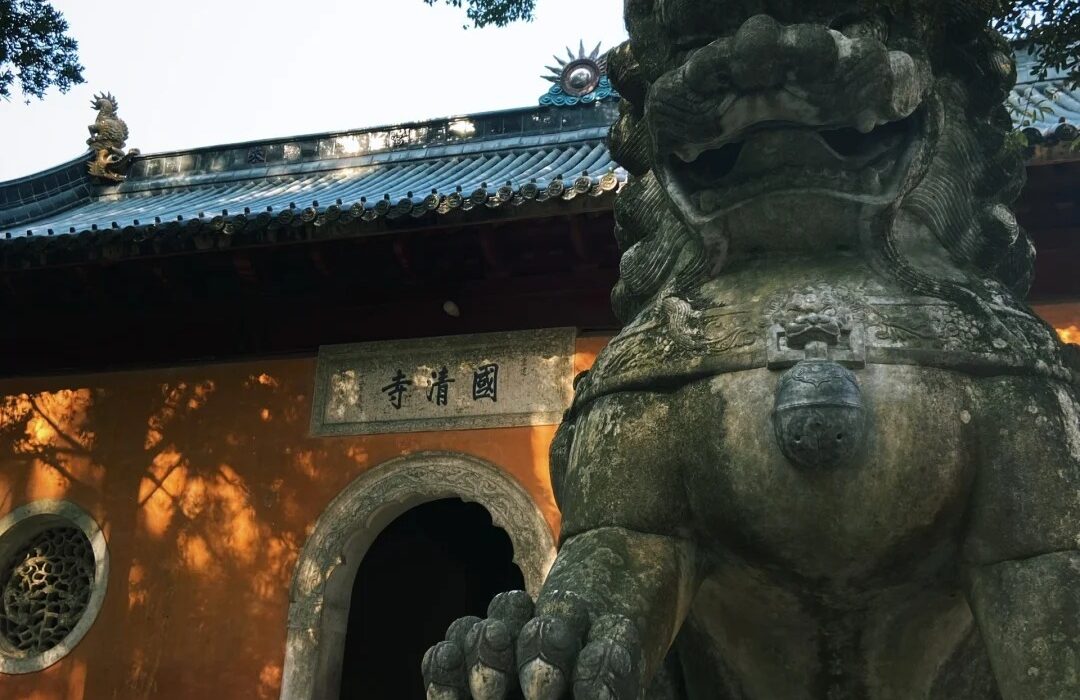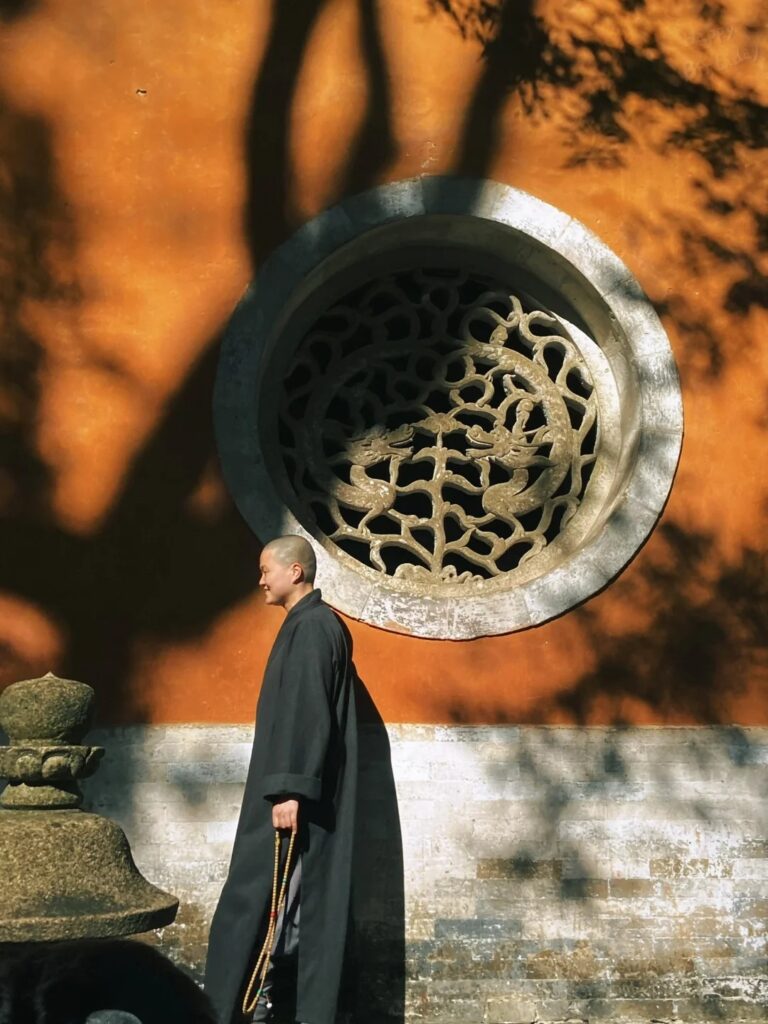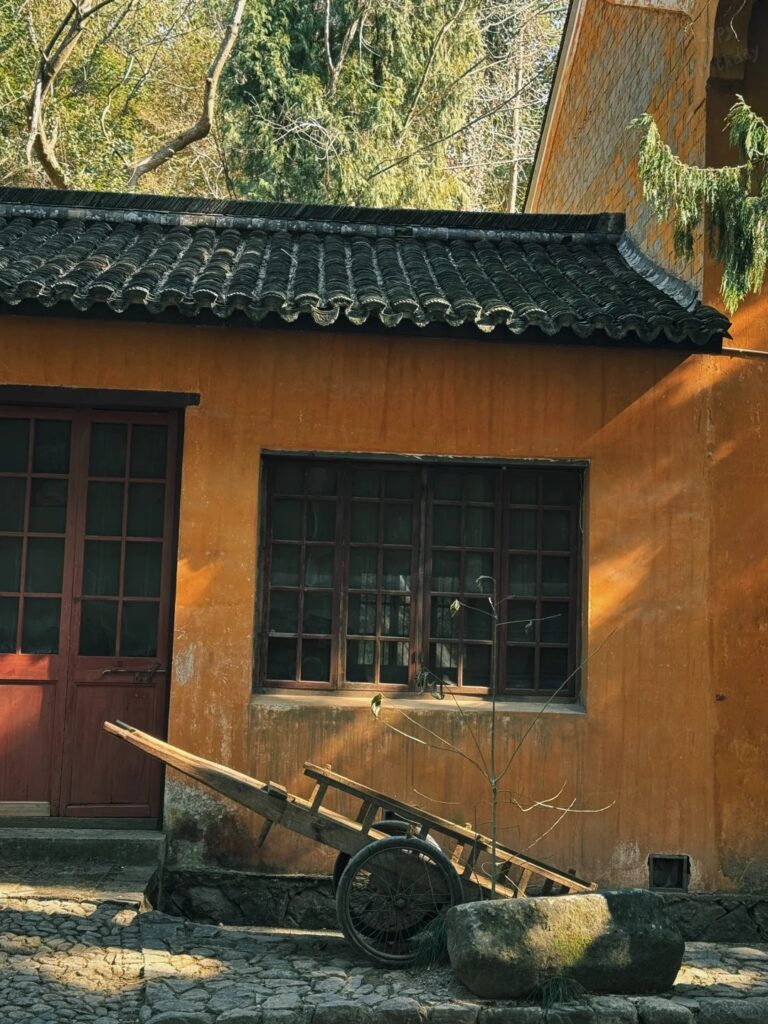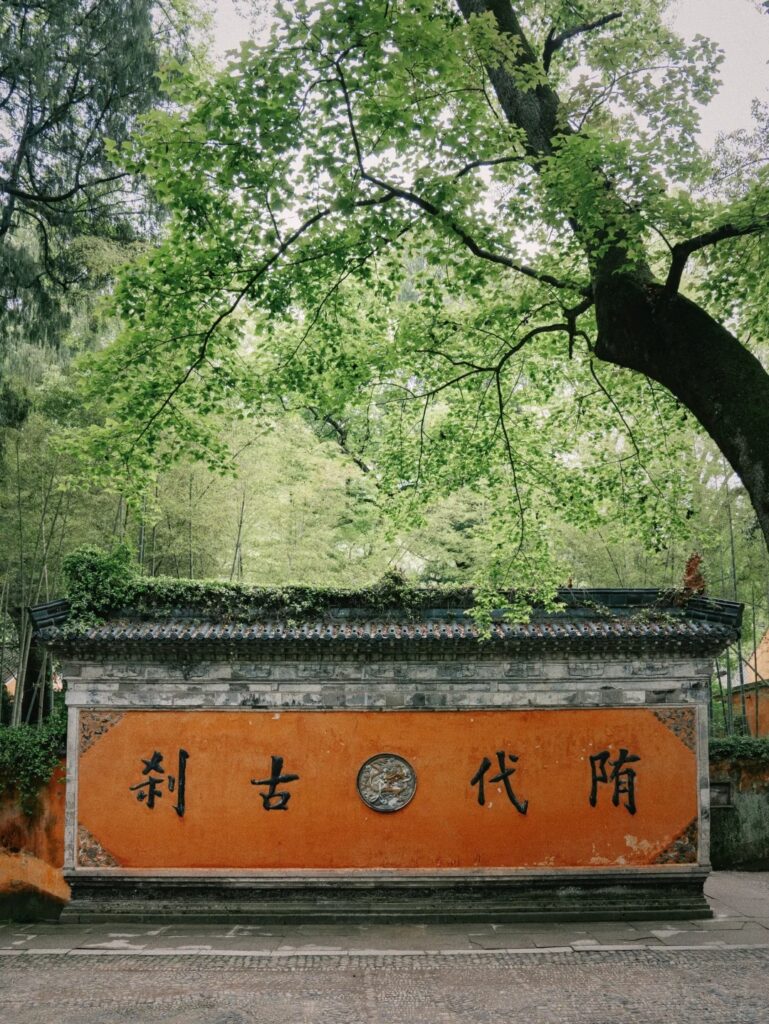
China’s Most Beautiful Temples | Guoqing Temple: A Journey Through a Millennium of Purity
Posted in :
“In a speck of dust, three thousand worlds reside; in half a blink, eighty thousand springs arise.” Visiting Guoqing Temple, one truly grasps the profound meaning of this Buddhist saying. A thousand years of time seem to congeal in this pure land. Wandering through its grounds is like stepping back through time, feeling the endless reincarnation of all things and a serene, distant tranquility.

Guoqing Temple is a place that allows one to cast off worldly worries and return to the heart’s sanctuary. Far from the hustle and bustle of the mortal world, here you’ll find only ancient, unadorned yellow walls shaded by lush greenery, with the air filled with the fragrance of flowers and Zen incense. Each step reveals a new vista, embodying the secluded and tranquil artistic conception of a “hidden ancient temple in a deep mountain.” It makes one instinctively slow down, hold their breath, and in an instant, feel a profound sense of peace and release in their soul.

The Rich Heritage of Guoqing Temple
📜 A Long and Storied History: Guoqing Temple was established in the Sui Dynasty (598 AD), originally named Tiantai Temple. It received its current name from the saying, “If the temple is completed, the country will be clear and peaceful” (寺若成,国即清 – Sì ruò chéng, guó jí qīng). It is revered as the birthplace of the Tiantai school of Buddhism and is counted among the “Four Great Temples of China,” alongside Lingyan Temple in Jinan, Qixia Temple in Nanjing, and Yuquan Temple in Dangyang.
📐 Unique Layout:
Built clinging to the mountainside, the temple eschews the symmetrical design of traditional monasteries. Instead, winding paths and covered corridors connect over 600 ancient structures. As you walk through, you often experience the delightful sensation of “passing through the willow shade and bright flowers to find another village” (柳暗花明又一村 – liǔ àn huā míng yòu yī cūn), a serendipitous discovery of new scenes.

🏛️ Cultural Treasures:
- The inscription “国清寺” (Guoqing Temple) was personally penned by Emperor Yongzheng of the Qing Dynasty. The white jade lions guarding the front of the Mahavira Hall were an imperial gift, signifying the temple’s extraordinary status.
- Cultural artifacts abound, including a stele with the single character “鹅” (Goose) in the calligraphy of Wang Xizhi, the inscription “鱼乐国” (Land of Fish Joy) by Dong Qichang, and the “Hall of Three Sages” (三贤堂 – Sān Xián Táng), commemorating the monks Hanshan, Shide, and Fenggan. These lend a palpable cultural aura to every corner.
- Esteemed literati such as Li Bai, Meng Haoran, Jia Dao, and Guo Moruo have all left behind poems and writings. This thousand-year-old temple is not only a sacred site of faith but also a profound source of inspiration for scholars and poets.

🌸 The Marvel of the Sui Dynasty Plum Blossom: To the right of the Mahavira Hall stands an ancient plum tree planted by a Sui Dynasty high monk. Having weathered 1400 years, it still flourishes vibrantly today. Its blossoms grace the temple for merely half a month each year; miss it, and you must wait another year.

⛩️ The Enduring Sui Pagoda: The Bao’en Pagoda, located outside the temple, was also built during the Sui Dynasty. Though it has suffered damage and repairs through the centuries, it has stood silently for a millennium, a quiet witness to the changing seasons, perfectly embodying the eternal artistic conception of “three thousand worlds in a speck of dust.

🚗 Transportation:
* Self-Driving: From Shanghai, navigate to Guoqing Temple, Tiantai County, Taizhou City. Parking outside the temple costs 10 RMB, and it’s about a 10-minute walk to the entrance.
* High-Speed Rail: From shanghai station to Tiantaishan Station, from tiantaishan station taxi directly to the temple will cost approximately 20 RMB.


